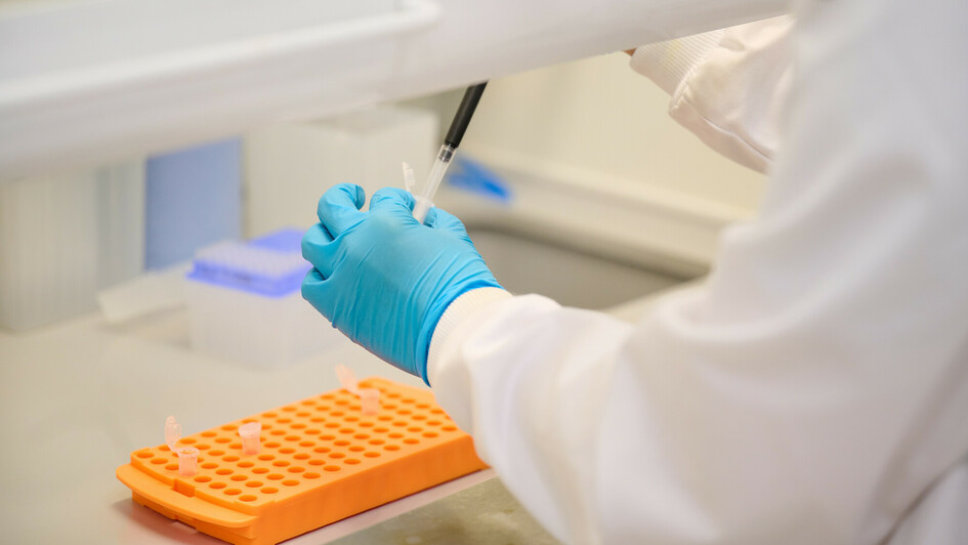Finlay outside front door, wearing Muscles Matter hoodie
Through our research into better drugs and treatments, and our involvement in the NICE and the SMC appraisal process, we have been able to help individuals living with muscle-wasting conditions access better treatments and improve their quality of life.
Scientists identify a new treatment approach for Charcot-Marie-Tooth

CMT is a genetic condition of the nervous system that affects approximately 1 in every 2,500 people. It is one of the most common conditions to affect our nerves and muscles. People with CMT often have mobility issues and difficulties in sensing the external environment. This is because two different types of nerve cells – known as motor neurons and sensory neurons – malfunction and deteriorate.
It is not currently understood why these important nerve cells are affected, and this has made it more difficult to develop treatments to address the condition.
To get a clearer understanding of the condition, the UCL researchers used cutting-edge imaging technologies to study mice with the genetic changes that cause CMT. This allowed them to model the development and progression of the condition. Their work revealed that an essential and continually active process in nerve cells known as ‘axonal transport’, was disrupted in the mice with CMT, contributing to the deterioration of their motor and sensory neurons.
Nerve cells have a long and thin tunnel-like structure called an axon, which allows for the delivery of electrical signals over long distances. Motor and sensory nerves have some of the longest axons of all our nerve cells, as they need to reach parts of the body that are a long way from the spinal cord – such as the muscles in our hands and feet.
For nerves to work properly and remain healthy, they require many substances to be transported up and down their axons. Motor and sensory neurons, in particular, rely on this process to deliver critical proteins – referred to as survival factors – from muscles towards the spinal cord.
The research identified that the delivery of key survival factors was impaired in the motor neurons of mice with CMT, impacting on their health. Importantly, further experiments were performed that identified the molecular cause for this disruption in delivery.
With this knowledge, the researchers were able to identify a treatment approach to improve the essential transportation system in mice with CMT. This involved boosting the levels of a key survival factor called BDNF in the affected muscles. Doing so completely restored axonal transport to healthy levels.
Further work is currently underway to determine whether correcting the disruption in axonal transport can improve other symptoms of CMT. The researchers are also working on ways to deliver BDNF to all muscles in the body to develop a body-wide treatment.
This piece was written by Dr James Sleigh, one of the researchers on this project.
Further Information
J.N. Sleigh et al. (2023) Boosting peripheral BDNF rescues impaired in vivo axonal transport in CMT2D mice. JCI Insight. https://doi.org/10.1172/jci.insight.157191
Axonal Transport: https://kids.frontiersin.org/articles/10.3389/frym.2020.00012
Sleigh Laboratory: https://www.sleighlab.com/
Schiavo Laboratory: https://www.ucl.ac.uk/ion/research/our-departments/neuromuscular-diseases/professor-g-schiavo
UCL Queen Square Institute of Neurology: https://www.ucl.ac.uk/ion/


